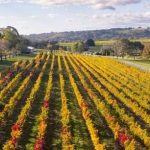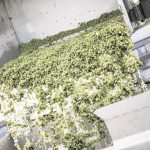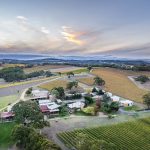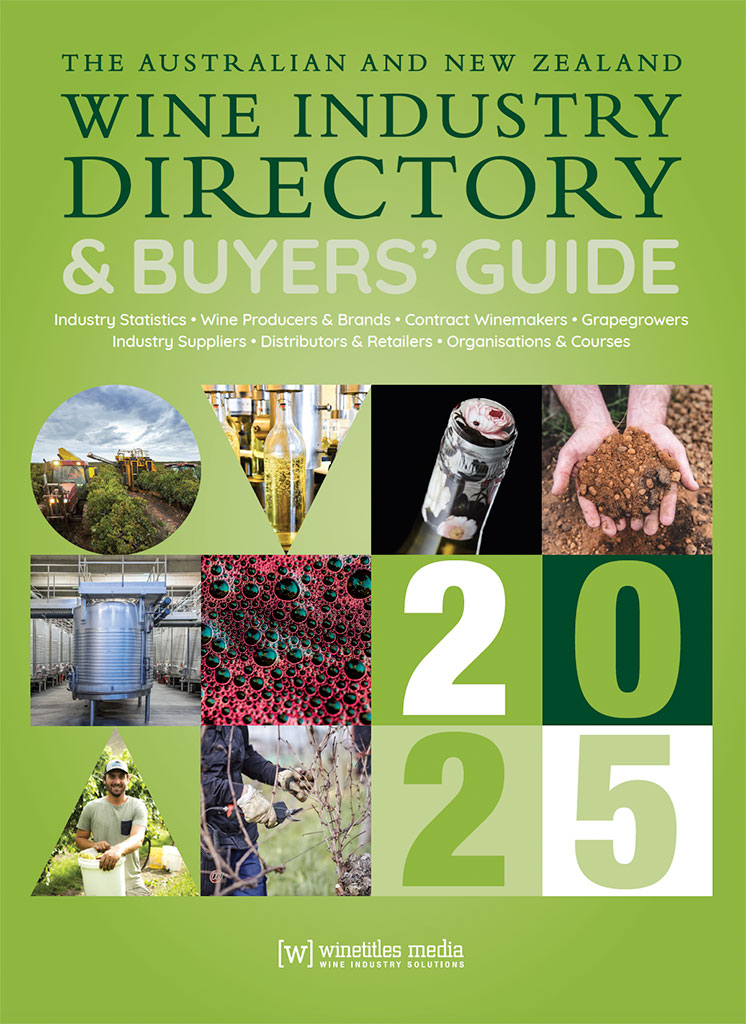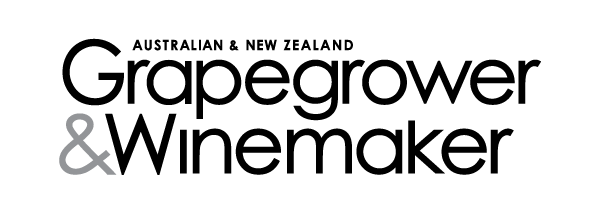By Dino Cotsaris, Vineyard Manager, Longview Vineyard, Adelaide Hills, South Australia
First published in the May/June 2018 issue of the Wine & Viticulture Journal
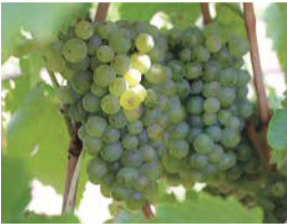
 Gruener Veltliner was first introduced to me in 2007 by Peter Saturno when the Saturno family purchased Longview Vineyard. Peter worked for a wine distribution company in New York and found this variety interesting and thought it would work well in the Adelaide Hills. We began to research the availability of Gruener Veltliner in Australia and through viticulturist Peter Burne managed to locate some material from Tasmania. Unfortunately, Peter died not long after and the material was never sourced.
Gruener Veltliner was first introduced to me in 2007 by Peter Saturno when the Saturno family purchased Longview Vineyard. Peter worked for a wine distribution company in New York and found this variety interesting and thought it would work well in the Adelaide Hills. We began to research the availability of Gruener Veltliner in Australia and through viticulturist Peter Burne managed to locate some material from Tasmania. Unfortunately, Peter died not long after and the material was never sourced.
In early 2010 we once again tried to source material and contacted the Adelaide Hills Vine Improvement Committee. We had cleared a patch of Merlot in 2008 which was on a south-facing slope ideal for Gruener Veltliner. At this point, Hahndorf Hill Winery had done the hard yards and imported three clones from Austria: IBY, a selection by a grower in Austria, and two others commonly planted in Austria named as HHWA1-2 and the HHWA1-3 in Australia.
After a lengthy discussion with the Adelaide Hills Vine Improvement Committee and Hahndorf Hill Winery including an onsite vineyard inspection and measuring the location of Longview Vineyard within the Adelaide Hills, we met all the criteria and were selected as one of five growers to plant a trial site and source block of all three imported clones.
VINEYARD
In December 2010, 1457 (approximately 0.35ha) of potted vines propagated by the Adelaide Hills Vine Improvement Committee were planted consisting of five rows of each clone on the above south-facing site.
Since then the patch has grown to 2ha consisting of an even amount of all three clones. There are three ages present with the second lot planted in 2011 and the last planting in 2013 due to vine availability issues.
The vines are all on own roots with 2.4m row spacings and vine spacings of 1.2m. We chose a closer vine spacing to help reduce the vigour of each individual vine as they matured. They are trained to a VSP trellis with a permanent cordon and pruned to approximately six twobud spurs per metre.
As the site is on a considerable slope, the elevation decreases approximately 25m from the highest to the lowest point and, hence, the soil profile depths vary considerably. We tend to find the lowest areas of this site shows more fertility and soil water-holding capacity. The topsoil is mainly fine sandy loam overlying a silty loam f ollowed by a clay loam with the average primary rootzone varying between 65–130cm.
Throughout the topsoil we see gravely iron stone and quartz leading to excellent drainage capabilities.
VITICULTURE
We try to establish good early growth to ensure the fruit is protected from direct sunlight as the row orientation is north-south which can lead to sunburn on exposed bunches both in the morning and afternoon. It tends to overcrop especially with its first five crops and, hence, shoot thinning and bunch thinning is essential. We shoot and bunch thin early prior to flowering followed by another bunch thin in early veraison to remove delayed bunches or congested areas to improve airflow, especially in wet seasons. Bunches and berries are generally very large, and yields can be excessive meaning acid retention can be difficult if yields are not managed.
We aim to achieve at least 1.2m of shoot length and, in good growing conditions, the vineyard will require a summer trim. We irrigate the patch according to principles required to maintain strong healthy canopies with minimal stressing for acid retention and building flavours throughout the ripening period. Short regular irrigations are preferred for canopy evenness as long, further apart irrigations can result in excessive vigour issues at the bottom of the slopes and stressed vines at the top of the slopes.
Pest and disease management for a white variety in a cool climate is relatively easy if the correct viticultural practices are put in place. Even though it can have very large berries and bunches and the ripening period can be relatively wet, we tend to find bunch rot isn’t an issue. Other whites, like Sauvignon Blanc, Riesling and Chardonnay at Longview, are much more difficult to control for bunch rots and other diseases like powdery mildew.
WINEMAKING
All the Gruener Veltliner is harvested by hand to try to preserve the fruit as best we can. It also allows us to sort in the field to avoid any bunches with undesirable characteristics. If the fruit cannot be processed immediately, it is cold stored overnight. Harvest date is mainly determined by flavour in the field, but we are also cautious of acid retention and find the best balance of flavours and acidity tends to be between 12-12.5 Baume for the mediumweighted style of our ‘Kuhl’. All three clones are harvested on the same day as the variability we see tends to work well together and, hence, an even amount of all three are allocated to the product.
The fruit is crushed and destemmed before gentle airbag pressing without further chilling. From 2017, we have conducted a full solids ferment, with no separation of free run and pressings.
Fermentation is initiated with an aromatic yeast and maintained at around 12-14°C and fermented to dryness. No extended lees contact is employed, before being cold stabilised, filtered and generally bottled in early July.
2017 VINTAGE
The 2017 Gruener Veltliner was harvested on the 17 March approximately three weeks later than previous seasons. It yielded approximately 2kg/vine and was processed at 12.5 Baume, 3.39pH and 5.77TA. The vines looked balanced with minimal sunburn and with exceptional canopy health. We used a total of 1mg/ha of irrigation water which was mostly applied from mid-January right through until harvest. Greater amounts of fertigation and foliar applied fertiliser were required during the growing season due to the wet, cold weather conditions. As it was a cool vintage we saw exceptional fruit flavour development early with good acid retention for Gruener Veltliner.
The 2017 ‘Kuhl’ is 100% Gruener Veltliner, 13% alcohol, 0.4g/L of residual sugar with a pH of 3.36 at 5.3g/L. The wine has brilliant clarity and pale straw colour. Aromas of pear, pepper and celery with hints of melon are evident.
The palate is dry and spicy with a textural, lingering finish of radish and golden delicious, underpinned by a lovely, crunchy, refreshing acidity. Fruit from this site also goes into single vineyard wines for Catlin Wines, CRFT Wines and Eccentric Wines. In the past Hahndorf Hill has also purchased parcels for ‘White Mischief’. Longview decided early in the whole project to support as many winemakers and producers as possible. We believe it gave the variety the best opportunity to grow in the marketplace but also to experience many different winemaking techniques to get a better understanding of the variety.
Longview is also part of the Gruener Grower Group, an initiative of the Adelaide Hills Wine Region which meets a couple of times a year to discuss the variety, wine styles, oenological and viticultural practices, perform bench tastings and how to push this alternative white to the next level. We can only see this variety improving as the vines mature.
GRUENER VELTLINER

By Peter Dry, Emeritus Fellow, The Australian Wine Research Institute
BACKGROUND
Gruener (Grüner) Veltliner (GRUHnah FELT-leenah) is the predominant white wine variety of Austria, with plantings primarily around and to the north of the Vienna region and also in the south of the country. It is also important in Slovakia, the Czech Republic (under the name of Veltlini, or Veltlinkske Zelene) and in Hungary (as Zoeldveltelini). Other synonyms include Bielospicak, Feherhegyue, Gruen Muskateller, Green Veltliner, Manhardtraube, Nemes Veltelini, Reifler Weiss, Ryvola Bila, Tarant Bily, Valteliner, Veltliner Grüen, Veltlini, Veltlinkske Zelene, Weissgipfler, Yesil Veltliner, Zeleny Muskatel, Zleni Veltinac, Zoeld Muskotaly and Zoeld Veltelini. There has been great interest in this variety in recent years, from both a consumer and producer viewpoint, in Austria and internationally. The global area in 2010 was 18,842ha (down 20% from 2000), 72% in Austria. There are some recent plantings in Central Otago (New Zealand) and in the Adelaide Hills and Canberra, with more planned. In Australia there are at least 20 wine producers (12 in South Australia). In SA there are 22ha planted, mainly in the Adelaide Hills.
VITICULTURE
Budburst is early (as for Chardonnay) and maturity is early (slightly later than Chardonnay). Vigour is moderate and yield is low. Bunches are small and well-filled to compact with small berries. In Austria it is typically trained on the Lenz Moser system and cane pruned. In the Adelaide Hills, it is spur pruned.
Susceptibility to downy and powdery mildew is average with good tolerance of botrytis bunch rot.
Several clones are now available in Australia.
WINE
Gruener Veltliner wines vary according to region and wine style. When yields are controlled, it can produce full-bodied wines with a complex array of aromas.
Descriptors include stone fruit, pineapple, citrus, tobacco, herbal, mint, caraway seeds and white pepper. Hahndorf Hill, the first producer of this variety in Australia, has fresh, medium to full styles with aromas of pear, quince, custard apple and a touch of white pepper.

